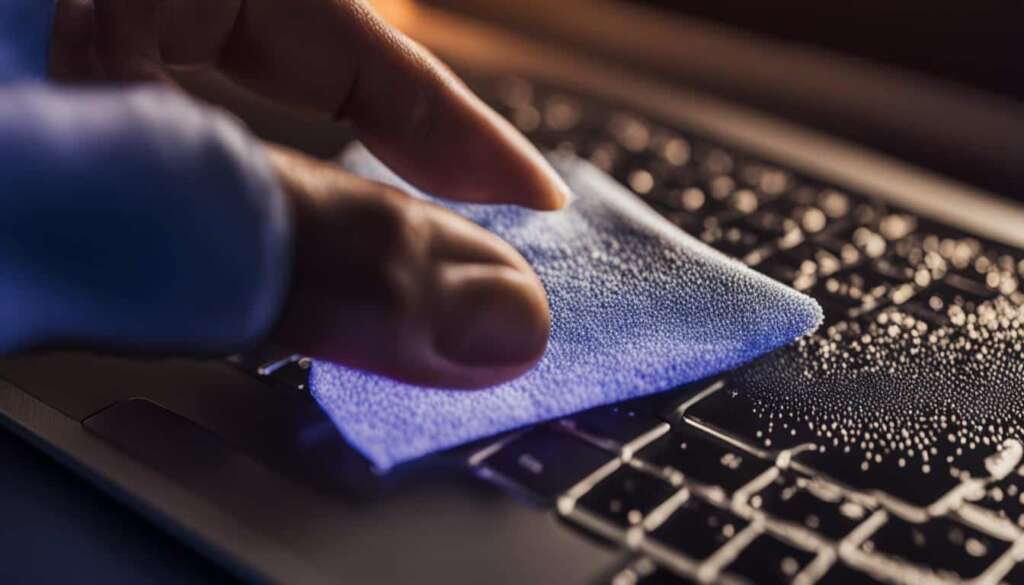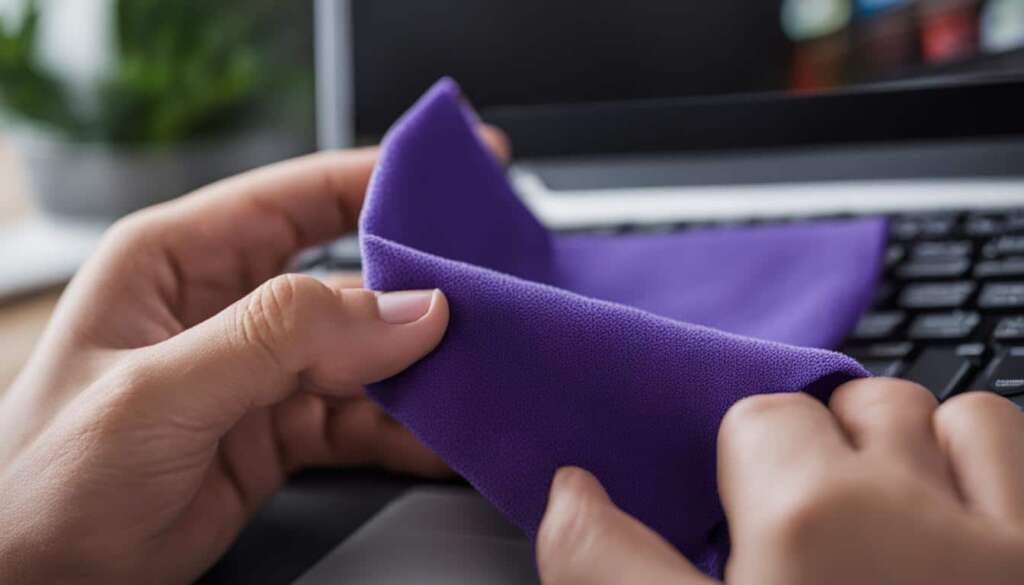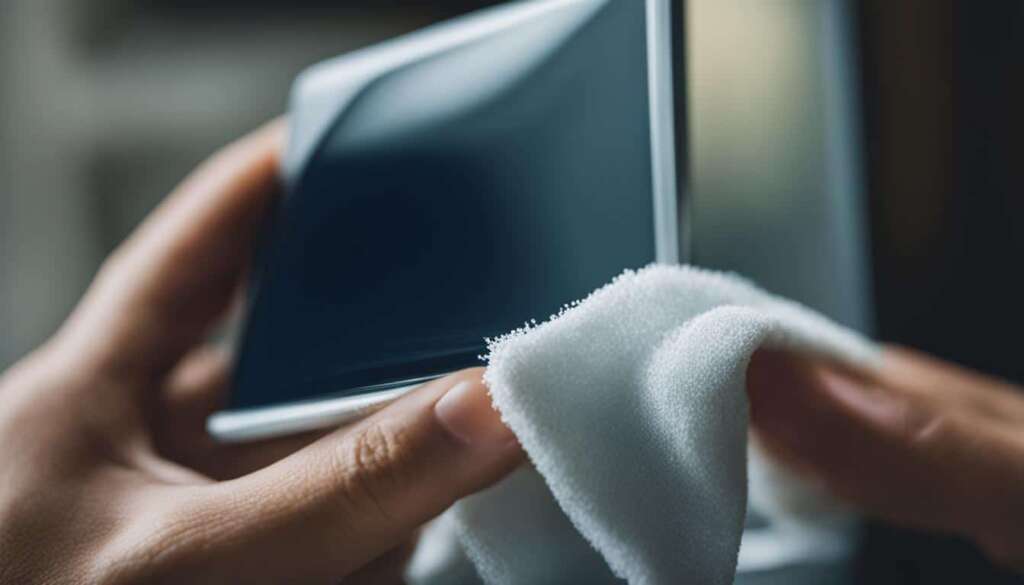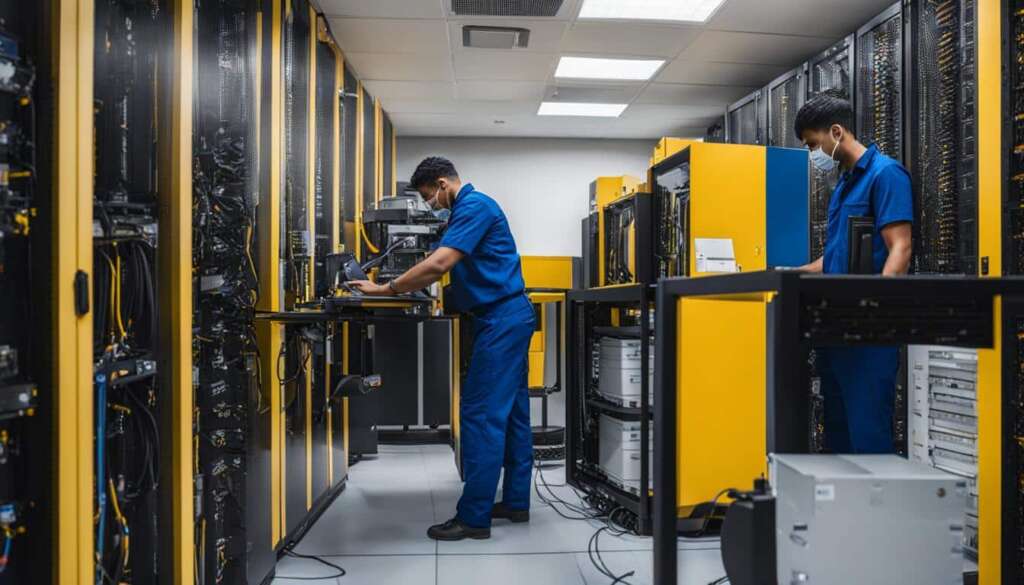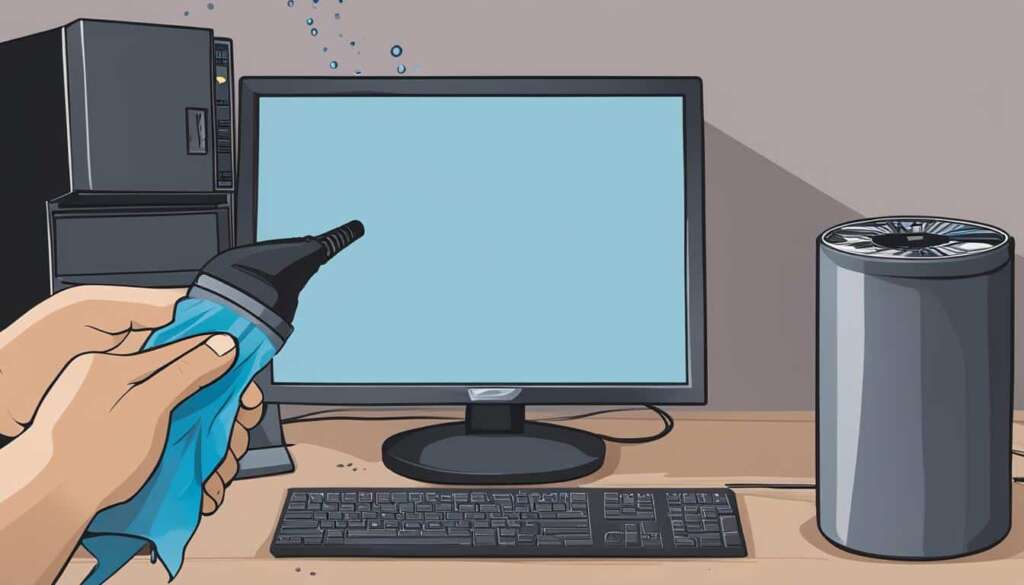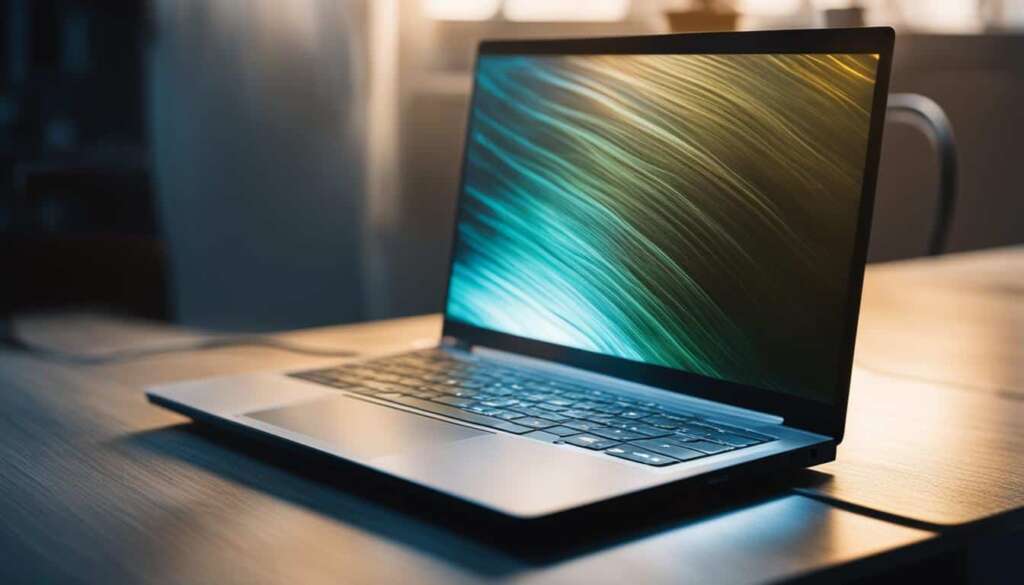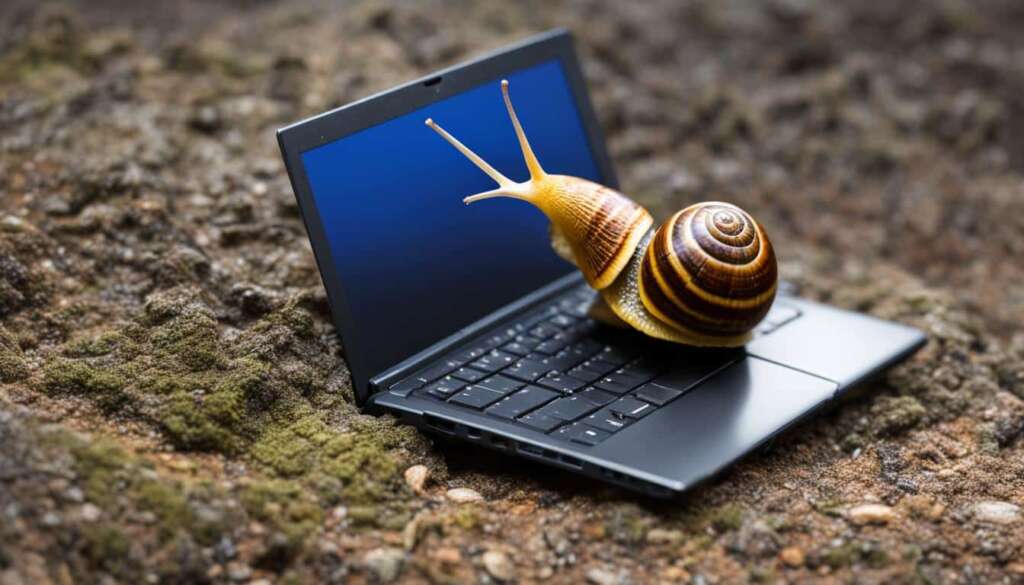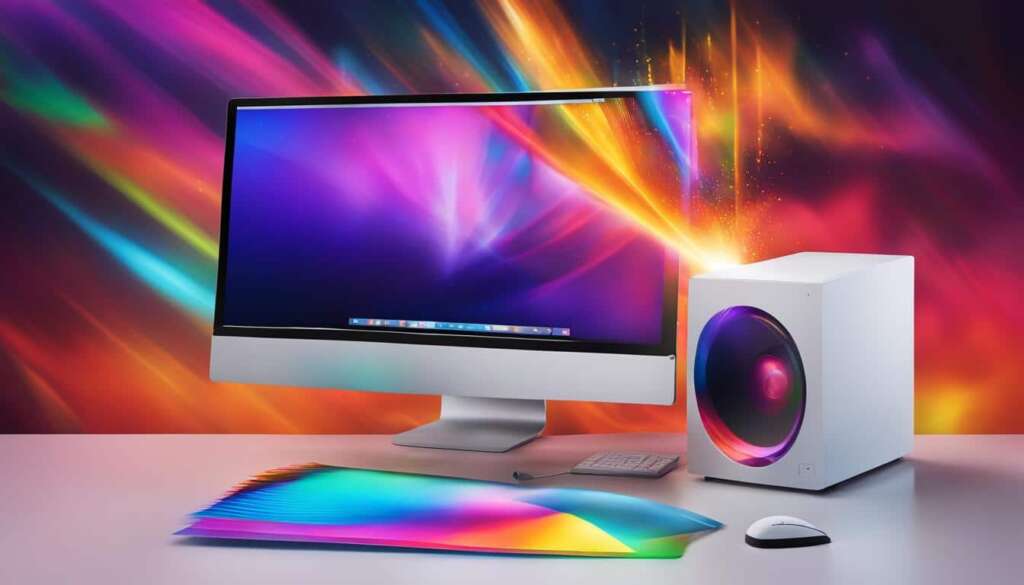Table of Contents
Welcome to our comprehensive guide on how to clean your laptop screen and maintain its hygiene. Your laptop screen is the window to your digital world, providing you with crystal-clear visuals and an immersive viewing experience. However, over time, it can accumulate dust, fingerprints, and smudges, diminishing the screen’s clarity and affecting your overall enjoyment. Fear not, as we’re here to equip you with effective cleaning methods and valuable tips to keep your laptop screen streak-free and in excellent condition.
Keeping your laptop screen clean is not only essential for optimal viewing pleasure, but it also contributes to the overall hygiene of your device. With our guidance, you’ll learn how to properly care for and revive your screen if it encounters any damage. We’ll explore different types of screen damage, such as cracked screens, dead pixels, screen flickering, and discoloration, providing you with troubleshooting techniques and solutions. By following our expert advice, you’ll be able to diagnose and address these issues effectively, ensuring the longevity of your laptop screen.
Cleaning your laptop screen doesn’t have to be a daunting task. We’ll walk you through step-by-step instructions on how to clean your screen safely and effectively. We’ll highlight the necessary supplies, such as deionized water and a microfiber cloth. Additionally, we’ll share essential precautions to avoid streaks, scratches, and other potential damages during the cleaning process. By incorporating our recommended cleaning frequency, your laptop screen will remain sparkling clean and ready for hours of uninterrupted use.
Revitalising your laptop screen is not only about the physical aspect but also about maintaining its overall performance. A clean screen can reduce strain on your eyes and enhance your productivity. So, join us on this journey to clean, revive, and maintain your laptop screen, and elevate your digital experience to new heights. Let’s dive in and discover how to achieve a streak-free and vibrant laptop screen.
Understanding Laptop Screens
Laptop screens are essential components that allow us to view and interact with the digital world. Understanding the different types of laptop screens and their characteristics can help you make informed choices when purchasing or maintaining your device.
Laptop Screen Types:
There are several types of laptop screens available in the market. The most common ones are:
- LCD Screens: LCD (Liquid Crystal Display) screens are known for their sharp images and energy-efficient properties. They use a backlight to illuminate the pixels, resulting in vibrant colors and clear visuals.
- LED Screens: LED (Light Emitting Diode) screens are a newer technology that offers significant advantages over LCD screens. They provide improved color accuracy, better contrast, and increased durability. LED screens are also energy-efficient, making them an excellent choice for eco-conscious users.
- OLED Screens: OLED (Organic Light Emitting Diode) screens deliver exceptional color accuracy and contrast ratios. Each pixel in an OLED screen emits its own light, allowing for true blacks and vivid colors. However, OLED screens are susceptible to burn-in issues, where static images can leave a permanent mark on the display over time.
Laptop Screen Characteristics:
When choosing a laptop screen, consider the following characteristics:
- Resolution: The screen resolution determines the level of detail and clarity. Higher resolutions offer sharper images.
- Size: Laptop screens come in various sizes, typically ranging from 11 to 17 inches. Larger screens provide more immersive experiences, but they can also make the laptop bulkier and less portable.
- Refresh Rate: The refresh rate refers to the number of times the screen updates per second. Higher refresh rates result in smoother visuals, making them ideal for gaming or watching videos.
- Response Time: The response time indicates how quickly the pixels can change colors. Lower response times reduce motion blur, enhancing the viewing experience, especially during fast-paced activities like gaming.
Proper care and handling of your laptop screen are essential for its longevity and performance. Avoid applying excessive pressure, use caution when opening and closing the laptop, and refrain from forcefully touching the screen. Regular cleaning with a soft cloth helps remove fingerprints, dust, and smudges, keeping your screen in pristine condition.
In the next section, we will explore the various types of damage that can affect laptop screens and how to diagnose and revive them.
Types of Laptop Screen Damage
Laptop screens can experience various types of damage. It is important to be aware of these issues to accurately diagnose and address them. Here are some common types of laptop screen damage:
- Cracked or Broken Screens: Accidents or excessive pressure can lead to cracks or breaks in the laptop screen. In such cases, a replacement is often required.
- Dead Pixels: Dead pixels are tiny spots on the screen that do not change color. These pixels can be distracting and affect the overall screen quality.
- Stuck Pixels: Stuck pixels are pixels that remain a single color and do not change. They can be of any color and may appear as small dots on the screen.
- Lines on the Screen: Vertical or horizontal lines of different colors can be seen on the laptop screen. Loose cable connections are often the culprit behind these lines.
- Screen Flickering: If the laptop screen flickers, it may indicate a problem with the backlight, failing inverter, or graphics card.
- Dark Screens: Dark screens can be caused by backlight issues or power problems. Adjusting the screen brightness or seeking professional help may resolve the issue.
- Discoloration: Discoloration on the laptop screen can be a result of magnetic interference or failing graphics cards.
- Burn-in: Burn-in occurs when a static image is displayed for an extended period, leaving a permanent mark on the screen.
- Blank Screen Issue: If the laptop screen remains blank, it may be due to failing graphics cards or faulty screen connections.
Laptop Screen Damage Examples:
To provide a visual representation of these types of laptop screen damage, here are some examples:
Figure 1: Cracked Laptop Screen
A cracked laptop screen caused by accidental damage or excessive pressure.
| Damage Type | Description | Example Image |
|---|---|---|
| Dead Pixels | Tiny spots on the screen that do not change color | |
| Stuck Pixels | Pixels that remain a single color and do not change | |
| Lines on the Screen | Vertical or horizontal lines of different colors on the screen | |
| Screen Flickering | The screen continuously flickers | |
| Dark Screens | The screen appears significantly darker than normal | |
| Discoloration | Irregular color patches or distortions on the screen | |
| Burn-in | Permanent image retention on the screen | |
| Blank Screen Issue | The screen remains completely blank | 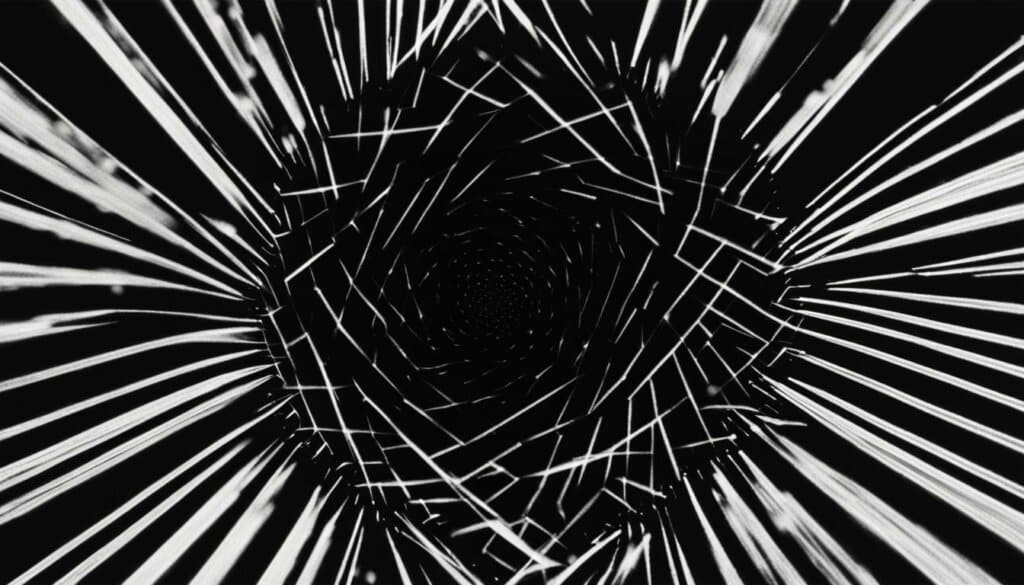 |
How to Diagnose and Revive a Laptop Screen
When your laptop screen starts experiencing issues, it’s important to diagnose the problem accurately so that you can take the necessary steps to revive it. In this section, we will explore common screen problems and provide solutions to help you get your laptop screen back to its optimal state.
Diagnosing Physical Damage
To determine if your laptop screen has physical damage, carefully inspect the screen for cracks, breaks, or any signs of distortion in the display. Physical damage often requires a screen replacement to resolve the issue.
Remember to handle your laptop screen with care to avoid causing any further damage.
Fixing Stuck or Dead Pixels
Stuck or dead pixels can be an annoyance, but they can often be fixed. You can try using software tools like JScreenFix to revive stuck pixels by running the program on your screen for a specified period. Similarly, you can apply slight pressure on a dead pixel using a soft cloth or a pixel-fixing device to revive it.
Resolving Lines on the Screen
If your laptop screen has horizontal or vertical lines, it may indicate loose cable connections. Start by checking the connections and ensuring they are secure. Tighten any loose cables to fix the issue before considering further troubleshooting steps.
Addressing Screen Flickering
Screen flickering can be quite frustrating, but it is often fixable. Begin by checking the backlight, inverter, and graphics card. If the issue persists, updating the graphics card drivers or seeking professional help may be necessary to resolve the flickering problem.
Troubleshooting Dark Screens
If your laptop screen appears dark, adjusting the screen brightness settings may help. Ensure that your laptop is not in power-saving mode, and check the screen brightness controls. If the problem persists, seeking professional assistance may be required to troubleshoot and resolve the underlying issue.
Fixing Discoloration Issues
Discoloration on a laptop screen can result from magnetic interference or failing graphics cards. You can start by demagnetizing the screen using a demagnetizing tool or a degaussing coil to eliminate the discoloration. If the problem persists, it may be necessary to replace the graphics card or seek professional help.
Preventing Burn-in
Burn-in occurs when a static image is displayed for an extended period, resulting in a permanent mark on the screen. To prevent burn-in, avoid keeping static images or leaving your laptop idle for extended periods. Use screensavers or sleep mode when the device is not in use.
Troubleshooting Blank Screens
If you are experiencing a blank screen issue, it could indicate a failing graphics card or a faulty screen connection. Start by checking the connections and ensuring they are secure. If the problem persists, consult a professional technician for further diagnosis and repair.
By following these tips and troubleshooting steps, you can diagnose and revive your laptop screen, saving you from the expense of a replacement and ensuring an optimal viewing experience. Remember to handle your laptop screen with care and seek professional assistance when needed.
| Common Laptop Screen Problems | Solutions |
|---|---|
| Physical Damage (cracks, breaks, distortion) | Screen replacement |
| Stuck or Dead Pixels | Software tools (e.g., JScreenFix), apply slight pressure |
| Lines on the Screen | Check and secure cable connections |
| Screen Flickering | Check backlight, inverter, and graphics card |
| Dark Screens | Adjust screen brightness, seek professional help if necessary |
| Discoloration | Demagnetize screen, replace graphics card if needed |
| Burn-in Prevention | Avoid static displays, use screensavers or sleep mode |
| Blank Screens | Check connections, consult professional for further diagnosis |
How to Clean a Laptop Screen
Keeping your laptop screen clean is essential for optimal viewing and overall device hygiene. Regular cleaning not only helps maintain screen clarity but also prolongs the lifespan of your laptop. In this section, we will guide you on how to clean your laptop screen effectively.
Laptop Screen Cleaning Supplies:
- Microfiber cloth
- Deionized water
Steps to Clean a Laptop Screen:
- Power off your laptop and unplug it from the power source.
- Take your microfiber cloth and gently wipe the screen to remove any loose dust or debris.
- Spray deionized water onto the microfiber cloth. Avoid using regular tap water as it may contain minerals that can leave streaks on the screen.
- Gently wipe the screen using the dampened microfiber cloth. Start from the top and move downwards in a gentle, circular motion.
- Pay extra attention to areas with smudges or fingerprints, applying slightly more pressure to remove them.
- Allow the screen to air dry completely before closing your laptop or turning it back on.
Laptop Screen Cleaning Precautions:
- Do not use harsh chemicals, such as alcohol or ammonia-based cleaners, as they can damage the screen.
- Avoid using rough materials, such as paper towels or tissues, as they can scratch the screen.
- Always use a soft microfiber cloth specifically designed for cleaning electronic screens.
- Never spray water directly onto the screen; always apply it to the cloth first.
Frequency of Laptop Screen Cleaning:
It is recommended to clean your laptop screen at least once a week to prevent the build-up of dirt, fingerprints, and smudges. However, if you frequently touch the screen or work in a dusty environment, you may need to clean it more often.
By following these simple cleaning steps and precautions, you can maintain a clean and clear laptop screen, ensuring an optimal viewing experience every time.
Conclusion
A clean laptop screen is of utmost importance for an immersive and pleasant user experience. By prioritizing regular cleaning and effective maintenance, you can safeguard your screen from damage, extend its lifespan, and promote optimal hygiene. Incorporating the tips and techniques outlined in this comprehensive guide will enable you to revitalize your laptop screen and elevate your visual enjoyment.
Remember to clean your laptop screen on a frequent basis, ideally at least once a week, to prevent the accumulation of dirt and grime that could compromise screen clarity. Employing the appropriate precautions, such as using deionized water to prevent streaks and utilizing a soft microfiber cloth to avoid scratches, will ensure that your cleaning efforts yield the best results.
By taking proactive steps to care for your laptop screen, you can maintain its pristine condition and maximize its performance. A little TLC in the form of routine cleaning and mindful usage can go a long way in preserving the longevity and picture quality of your screen. Invest your time and attention in the care of your laptop screen, and enjoy a visually stunning digital experience like never before.
FAQ
How do I clean my laptop screen?
To clean your laptop screen, you will need a microfiber cloth and deionized water. First, spray the water generously on the screen. Then, wipe it off gently with the microfiber cloth. Make sure to let the screen dry completely before using your laptop again.
How often should I clean my laptop screen?
It is recommended to clean your laptop screen at least once a week to prevent the build-up of dirt and maintain screen clarity.
Can I use any cloth to clean my laptop screen?
No, it is important to use a soft microfiber cloth specifically designed for cleaning screens to avoid scratching the delicate surface of your laptop screen.
What should I avoid when cleaning my laptop screen?
When cleaning your laptop screen, you should avoid using harsh chemicals, abrasive materials, or excessive pressure, as they can damage the screen. It is also important to use deionized water to prevent streaks and damage.
How can I prevent damage to my laptop screen?
To prevent damage to your laptop screen, you should handle it with care by gently opening and closing the laptop, avoiding forceful touching, and keeping it away from liquids and excessive heat. Regular cleaning and maintenance of the screen can also help prevent damage.
My laptop screen is cracked/broken. Can it be fixed?
If your laptop screen is cracked or broken, it usually requires a replacement. It is best to consult a professional technician for repair or contact the manufacturer for assistance.
What can I do about dead pixels or stuck pixels on my laptop screen?
Dead pixels and stuck pixels can sometimes be fixed. You can try using software like JScreenFix or applying slight pressure on the affected area to revive the pixel. However, if these methods do not work, it may require professional repair or screen replacement.
How can I fix lines on my laptop screen?
Lines on the laptop screen can be caused by loose cable connections. You can try checking and securing the cable connections to fix the issue. However, if the problem persists, it is best to seek professional assistance.
Why is my laptop screen flickering?
Screen flickering can be caused by a faulty backlight, failing inverter, or graphics card issue. To address this issue, you can check the backlight, inverter, and graphics card for any problems. If necessary, consult a professional technician for further diagnosis and repair.
My laptop screen is dark. How can I fix it?
Dark screens can be caused by backlight issues or power problems. You can try adjusting the screen brightness or checking the power settings on your laptop. If the problem persists, it is recommended to seek professional help for further troubleshooting and repair.
What causes discoloration on a laptop screen?
Discoloration on a laptop screen can be caused by magnetic interference or failing graphics cards. To fix the issue, you can demagnetize the screen using specialized tools or consult a professional technician for further assistance or screen replacement.
How can I prevent burn-in on my laptop screen?
Burn-in occurs when a static image is displayed for a long time, leaving a permanent mark on the screen. To prevent burn-in, avoid displaying static images for extended periods. You can also use screensavers or power-saving settings to minimize the risk of burn-in.
What should I do if my laptop screen is blank?
If your laptop screen is blank, it can be caused by a failing graphics card or faulty screen connections. You can try troubleshooting by checking the graphics card and ensuring secure screen connections. If the issue persists, seek professional assistance for further diagnosis and repair.

